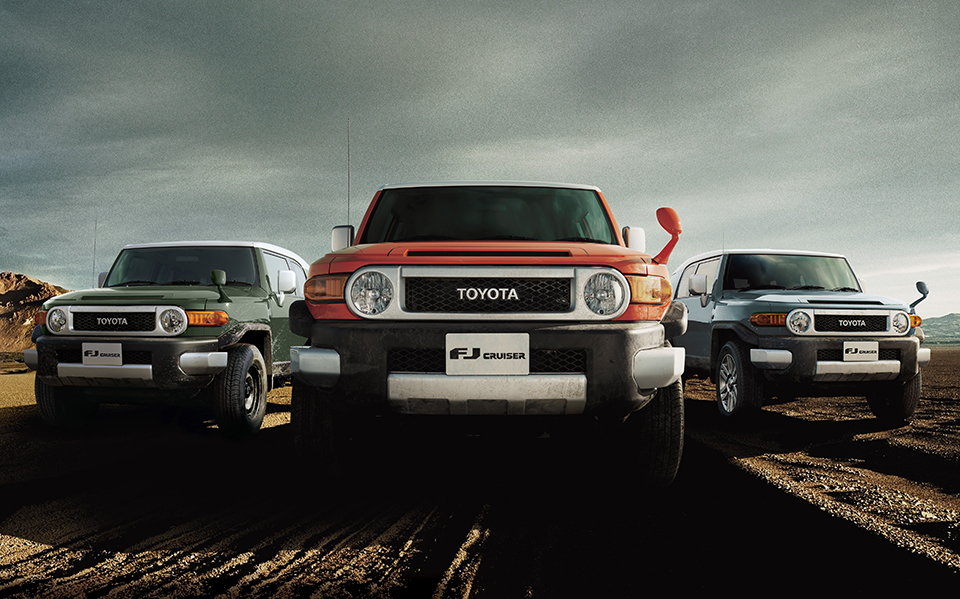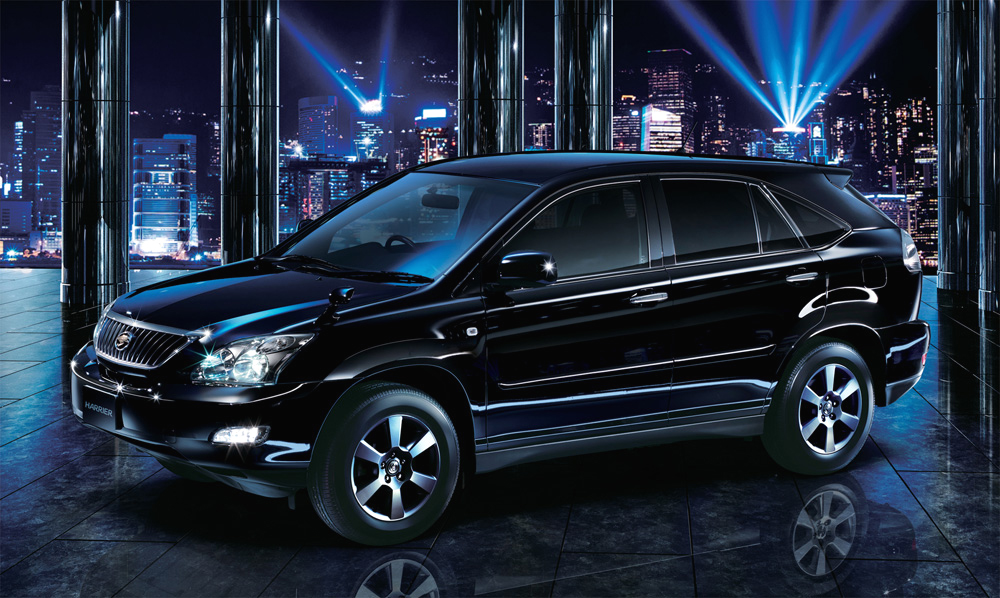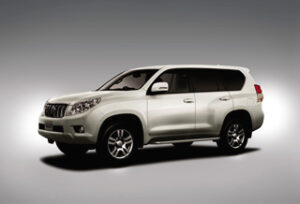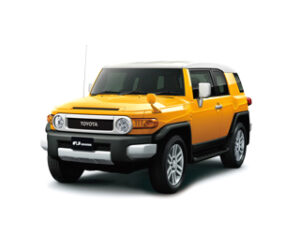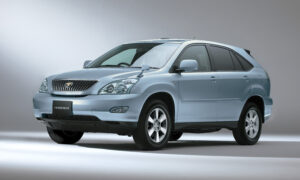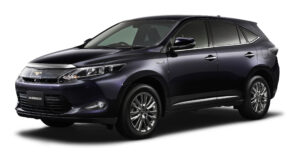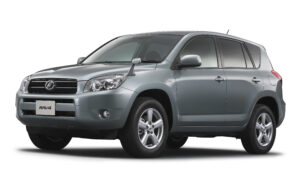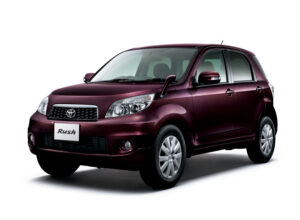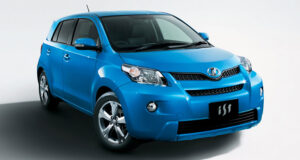Toyota SUV Summary from 2011-2015
On the eve of the SUV boom, the FJ Cruiser and the Japan-exclusive Harrier model are launched.
The Japanese market in the first half of the 2010s was affected by the soaring gasoline prices in 2005 and the Lehman Shock in 2009, and the RV boom that had been going on since the 1990s came to a halt. As a result, Toyota’s SUVs, mainly mid-size models, were reorganized from the old models.
In the large-size segment, the Land Cruiser, which boasts a long history as a full-fledged XC four-wheel drive vehicle, was launched in 2007 with the 200 series, while the Land Cruiser Prado was launched in 2009 with the 150 series, both of which were sold throughout this period. In addition, the FJ Cruiser, which was originally a model for North America, gained popularity in Japan and was introduced in 2010.
Behind the popularity of the Harrier, the fourth-generation model of the RAV4 was not introduced.
In the mid-size segment, the popularity of the 2nd generation Harrier (= 2nd generation Lexus RX) continued unabated, and even after its successor, the 3rd generation Lexus RX, was launched in Japan in 2009, it was sold alongside it. 2013 saw the launch of the 3rd generation Harrier based on the RAV4, not the Lexus RX, as a model sold exclusively in Japan, establishing its position as a premium SUV in the Japanese market. In contrast, the popularity of the 3rd generation RAV4 was sluggish, and the 4th generation model, which was announced globally in 2013, was not introduced to the Japanese market, but remained as the 3rd generation model and was sold until 2016. The Vanguard, a long-body version of the third-generation RAV4, did well in terms of sales due to the discontinuation of the Harrier’s V6 engine model in 2008, but was absorbed by the third-generation Harrier in 2013.
In the compact size, the Rush, a sister model of the Daihatsu Vigo launched in 2006, continues to be sold until 2016.
The following Toyota SUVs were sold in Japan between 2011 and 2015.
Size L: Land Cruiser (200 series, 2007 – 2021)
Size L: Land Cruiser Prado (150 series, 2009-)
Size L: FJ Cruiser (2010-2018)
Size M: Harrier (2nd generation, 2003-2013), Harrier (3rd generation, 2013-2020)
Size M: RAV4 (3rd generation, 2005-2016)
Size M: Vanguard (2007-2013)
Size C: Rush (2006-2016)
Introduction of Toyota SUV models sold from 2011-2015
Land Cruiser 200 series (Large XC, 2007-2021)
Enhanced driver assistance features after minor changes in 2012 and 2015

The 200 series, which was introduced in 2007, inherited the high rough road durability and durability of previous generations of Land Cruisers, and at the same time enhanced the interior and other equipment. V8, but was converted to the new 1UR-FE + 6AT.
Minor changes were made in December 2012, with new front and rear light designs, In August 2015, the second minor change was made to the exterior, front and rear, and interior design. The Toyota Safety Sense P system, which includes automatic braking, ACC, and lane departure warning, is now standard on all models, and other advanced driving support functions have been enhanced.
Land Cruiser Prado 150 series (Large, XC, 2009-)
Minor changes in 2013, with the addition of a diesel-powered vehicle in 2015 for the first time in many years.
The fourth-generation Prado, which was introduced in 2009, carries over the basic components of its predecessor, such as the chassis and engine, but has improved comfort. The short 3-door version was discontinued for the Japanese market, and only the 5-door version was available. The 2.7L straight-4 gasoline engine (2TR-FE) with 4AT and the 4.0L V6 gasoline engine (1GR-FE) with 5AT are available, and the V6 engine has been switched to regular gasoline specification.
Minor changes were made in 2013, including front and rear design changes, the addition of a multi-information display, and changes to the suspension for on-road performance, In June 2015, the 4.0L V6 gasoline engine was discontinued and replaced by a 2.8L straight-4 diesel turbo engine (1GD-FTV) with 6AT, and the 2.7L straight-4 The 2.7L straight-4 gasoline-powered model also has 6AT. On the other hand, the standardization of the advanced driving assist system, which was installed in the 200 series at the same time, was postponed until the 2017 facelift.
FJ Cruiser (Large XC, 2010-2018)
The long-awaited introduction in Japan was only for AT models, with some changes made every year.
The FJ Cruiser was launched in North America in 2006, and its retro-modern styling and full-fledged XC performance based on the Prado model gained a good reputation in Japan, where it went on sale in 2010 in Japan. The FJ Cruiser sold in Japan was only available with a 4.0L V6 gasoline engine (1GR-FE), 5-speed AT, and part-time 4WD. In addition to the base model, the “Off-Road Package” with rear differential lock and “Color Package” with colored door trim and other features were available. The FJ Cruiser was sold in Japan until 2018, even after sales ended in North America in 2013, as body colors were added and specifications were improved every year.
Harrier 2nd generation (Middle Urban, 2003-2013)
Even after the 3rd generation RX was launched in 2009, its popularity did not wane in Japan, and the model was not discontinued.
The second-generation Harrier, which was introduced in 2003, was marketed overseas under the name Lexus RX, as was the first generation, and became a popular model both in Japan and abroad, following the first generation as a passenger car-based luxury SUV. In Japan, the Harrier was initially equipped with two types of powertrains: a 3.0L V6 gasoline engine (1MZ-FE) with 5AT and a 2.4L straight-4 gasoline engine (2AZ-FE) with 4AT, both available in FF and 4WD. In 2005, a 3.3L V6 gasoline engine (3MZ-FE) with front and rear motors was introduced. Harrier Hybrid (= Lexus RX400h) was added, and in 2006, the V6 gasoline was replaced by a new 3.5L engine (2GR-FE).
With the introduction of the third-generation Lexus RX to the Japanese market in 2009, the Harrier was reorganized into a 2.4L-only grade, and it was expected that the model would eventually be discontinued. However, the 3rd generation Lexus RX (overall length 4770mm, overall width 1865mm, overall height 1690mm, wheelbase 2740mm) was larger than the 2nd generation Harrier (overall length 4735mm, overall width 1845mm, overall height 1670mm, wheelbase 2715mm), and its price had also increased. The popularity of the second-generation Harrier did not wane in Japan, and sales continued until 2013, with the addition of a special edition model in 2011 due to opposition from dealers.
Harrier 3rd generation (Middle Urban, 2013-2020)
The model was introduced in 2013 as a Japan-exclusive model due to its popularity in Japan, and it became a big hit.
The popularity of the Harrier continued to grow even after the introduction of the third-generation Lexus RX in Japan, and in 2013, the third-generation Harrier was introduced as a Japan-exclusive model. Compared to the second-generation Harrier (overall length 4735 mm, overall width 1845 mm, overall height 1670 mm, wheelbase 2715 mm), the third-generation Harrier is slightly smaller, with overall length 4720 mm, overall width 1835 mm, overall height 1690 mm, wheelbase 2660 mm, and the wheelbase was slightly reduced in size. In order to create a sense of luxury, the overall length was increased despite the short wheelbase based on the RAV4, and the design is characterized by large front and rear overhangs. It became popular as an SUV that combined a moderate size with a sense of luxury, establishing the Harrier brand in Japan.
The two powertrains are 2.0L straight-4 gasoline (3ZR-FAE) + CVT and 2.5L straight-4 gasoline (2AR-FXE) + hybrid. 2.0L straight-4 gasoline is also available as FF model, but the hybrid with THS II is 4WD only like the previous generation. Except for the lowest-priced grades, advanced driving assist systems are available as standard or optional. 2.0L straight-4 gasoline turbo (8AR-FTS) with 6AT and Toyota Safety Sense P, an advanced driving assist system, will not become standard on all models until the 2017 minor changes.
RAV4 3rd generation (middle urban, 2005-2016)
Due to its unpopularity in Japan, the model did not undergo a model change and continued to be sold.
The third generation RAV4, which was introduced in 2005, had its body size enlarged in response to the demands of the overseas market, and was now only available as a 5-door model. The powertrain was a 2.4L straight-4 gasoline engine (1AZ-FSE) with CVT, available in FF and 4WD. The three-row long body with seats, which was available in overseas models, has been sold in Japan since 2007 under a different name, the Vanguard.
Although some improvements were made in 2012, such as the addition of S-VSC, sales were sluggish due to the design that lost the first generation’s individuality and the increase in size. Overseas, the RAV4 switched to the 4th generation model in 2013, but in Japan, the 3rd generation Harrier was launched in the same year, and the 3rd generation RAV4 model was sold sparingly until 2016. After that, sales of the RAV4 in Japan would be interrupted until the fifth generation, which went on sale in 2019.
Vanguard (Middle Urban, 2007-2016)
Luxury middle SUV, successor to Kruger, also available in 3-row seat version and V6 engine
The Vanguard, a long-body version of the overseas RAV4, was made into a luxury SUV and sold in Japan. 3-row seat version was also available, and it was positioned as the successor to the first-generation Kruger (=Highlander) and the second-generation Harrier. The Vanguard was equipped with a 3.5-liter V6 gasoline engine (2GR-FE) with 5-speed AT in addition to the 2.4-liter straight-4 gasoline engine with CVT. At the time of its debut, all models were 4WD-only, but in 2008, FF was added to the 2.4L model.
The V6 engine model of the 2nd generation Harrier was discontinued in 2009, and sales were relatively strong. The V6 engine model was discontinued in 2012, and sales ended in 2013 to be replaced by the third-generation Harrier.
Rush (compact XC, 2006-2016)
Compact XC with serious driving performance, such as longitudinal RWD and built-in frame
It was born in 2006 as the successor to the Cami, which was an OEM model of the Daihatsu Terios. It was a compact XC SUV jointly developed with Daihatsu Vigo, with a longitudinally mounted RWD + built-in ladder frame monocoque chassis. 1.5L straight 4 gasoline (3SZ-VE) with 5-speed MT or 4AT, 4WD or RWD (4AT only) were available. 4WD had a center differential with lock The 4WD model had a center differential with a lock switch, and the 5-speed MT was set up in Europe.
A minor change in 2008 brought interior and exterior changes, and partial improvements were made in 2010 and 2012; a partial change in 2013 made VSC and TRC standard equipment on the 4WD model, but the MT model was discontinued; the RWD model was also discontinued in 2014, and the 4WD AT model continued to be sold until 2016. Its successor did not appear until the Rise (an OEM model of the Daihatsu Rocky), which went on sale in 2019.

